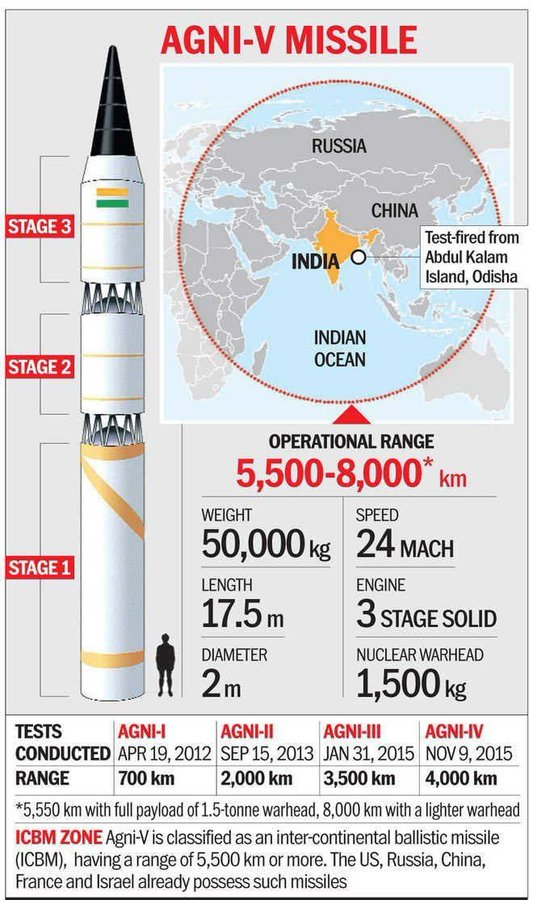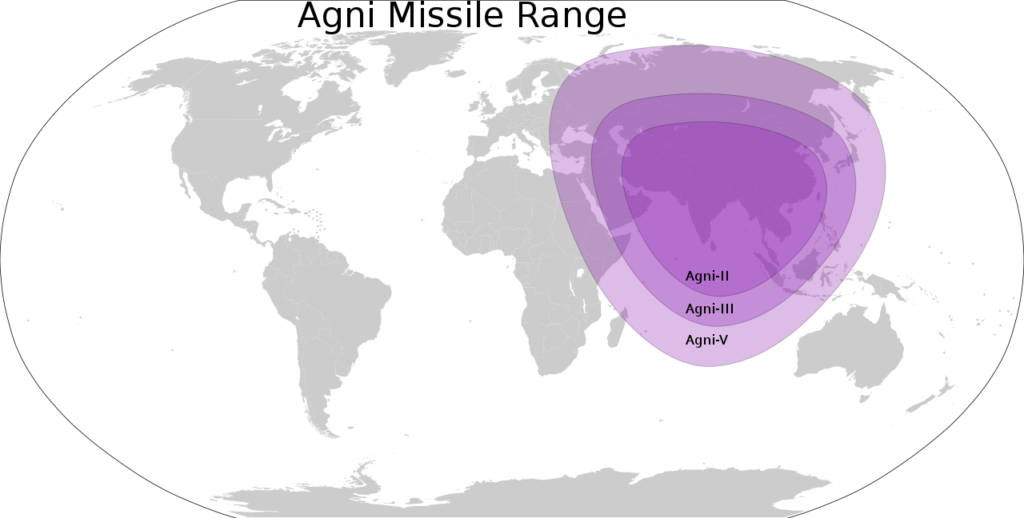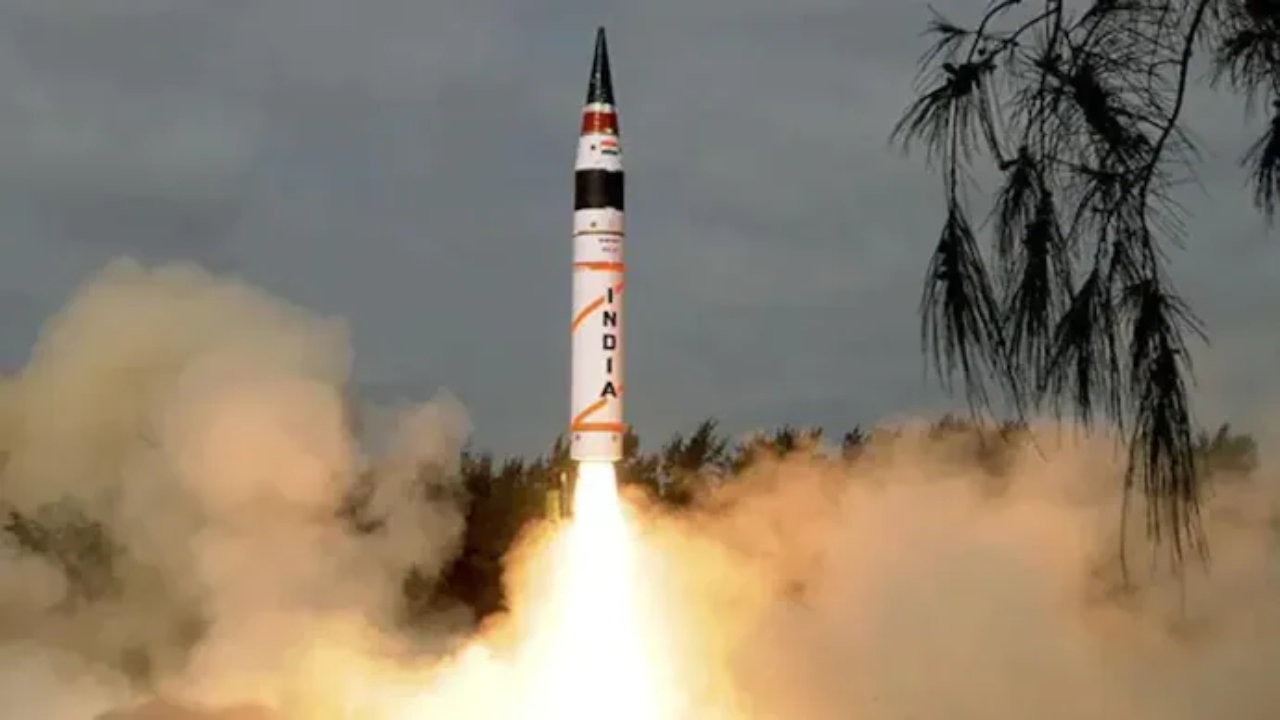Agni 5 is considered the most dangerous missile in India. This missile was developed to keep an eye on China. To have minimum credible deterrence. The word “Agni” in Sanskrit means “Fire“. To understand this missile we will have to look at the development of this series of missiles and what the number represents in this series. The number is basically a representation of the range or distance in Kilometers.

| S.NO | Missile Name | Max Range |
|---|---|---|
| 1 | Agni – 1 | 1200 Km |
| 2 | Agni – P | 2000 Km |
| 3 | Agni – 2 | 3500 Km |
| 4 | Agni – 3 | 4500 Km |
| 5 | Agni – 4 | 5000 Km |
| 6 | Agni – 5 | 8000 Km |
Agni 5 Test
The latest test of the Agni 5 missile was conducted on the 15th of December 2022 at the night. This night test was conducted so as to not provide any critical details of the technologies to the adversary, in this case, China as it has already positioned its spy ship in the Indian Ocean to collect data about this missile. This missile is crucial for the defense of India against a much stronger & bigger enemy.
Agni 5 Specifications
Agni 5 is an ICBM – Intercontinental Ballistic Missile which means it can hit targets on different continents. The government of India officially did not disclose the range of Agni – 5 Missile but said in multiple statements that a reduction in weight of up to 20% was achieved which can propel the missile to a range close to 8000 Km. The Agni missile that was tested and the one that we see in the image is an old photograph, so far no official image or specification was provided from the government side.

The missile has 3 stages. All the 3 stages are propelled by Solid Fuels. The 3rd stage is very critical as at this stage it becomes almost impossible for anyone to stop this missile because at this stage the missile reaches speeds close to Mach 24. The missile is launched via a canister battery mounted on a trailer which can be moved to the desired location at any given time.

The most important technology that was tested in this launch was MIRV – Multiple Independently Targetable Re-entry Vehicles. In simple words, MIRV technology gives a country the ability to target multiple locations with a single launch or a single target with distributed payload. A payload is a nuclear warhead. It can carry a payload of 1.5 tonnes. However, if it carries 4 projectiles of 500 Kg or 0.5 tonnes then the weight of the warhead can reach up to 2 tonnes.
Apart from this information, there are not many credible data points about this project. The success of the Indian space mission aided in the development of critical technology needed for the missile development program. Most of the credit for this program goes to the hard-working scientists of the ISRO & DRDO.



